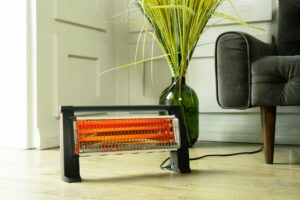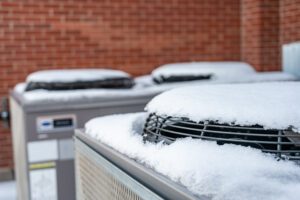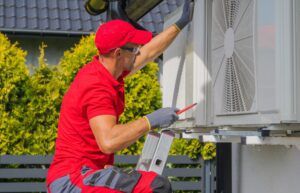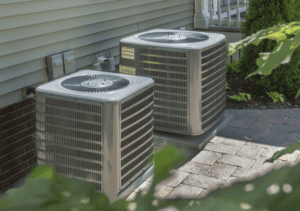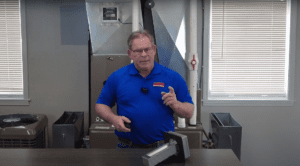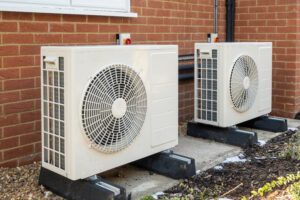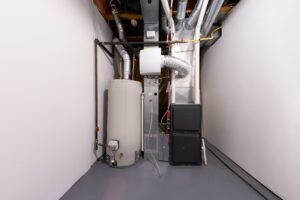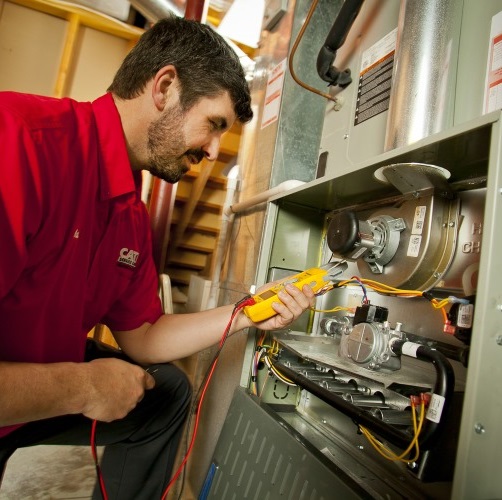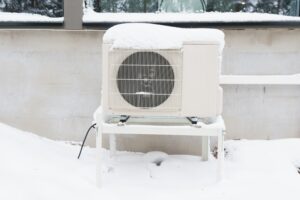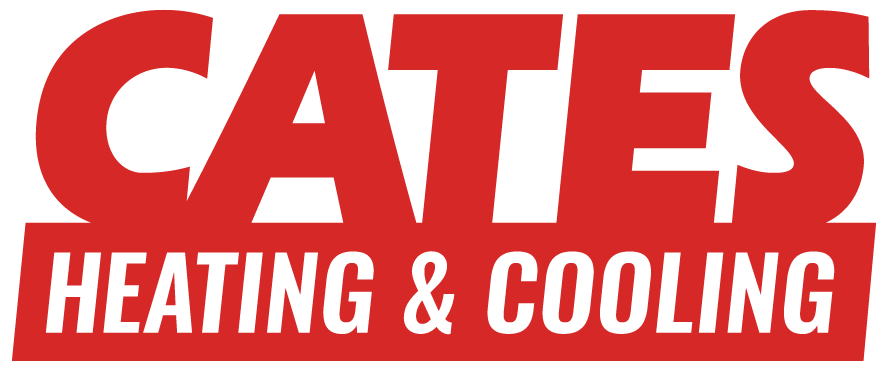There are many different types of furnaces, but at Cates Heating and Cooling, we only want our customers to have the best. For this reason, we only offer the best types of furnaces.
TYPES OF FURNACES
- Electric Furnaces with Heat Pumps
- Standard Gas Furnaces
- High-Efficiency Gas Furnaces
Electric Furnaces with Heat Pumps
Pros
- Available for homes not connected to gas
- Improved efficiency over traditional electric furnaces
- May be eligible for rebates and tax credits
Cons
- Less efficient than gas furnaces
- Heat pumps can be expensive
- Electricity costs are expensive and rarely decrease
If you don’t have gas running into your home, you can’t have a gas furnace installed. While many homes in the Kansas City Metro Area have gas, not all of them do, which means that these homeowners need a different option. Electric furnaces are available for gasless homes, but they generally use a lot of energy, which will dramatically increase your electricity bill. To increase the efficiency of an electric furnace, you can have a heat pump installed to work in conjunction with the furnace. When you add a heat pump to your electric furnace, you can improve the efficiency enough to save up to 30 percent on your heating bills.
Heat pumps condense the heat found in the outside air and brings it into your home. When it is colder than about 30°F, there isn’t enough heat found in the air to warm your home with just a heat pump, so the backup electric furnace will kick on to heat your home. Since the heat pump does the heating for most of the heating season, you won’t have to worry about the high prices of running an electric furnace for much of the year.
Heat pumps can be a bit expensive, but there are rebates and tax credits that you may be able to make use of when purchasing a heat pump. Additionally, you will save a ton of money on your heating bills without having to find a way to have a gas furnace installed in your home.
Since electricity costs don’t generally decrease, when possible, a gas furnace is probably going to be a cheaper option in your home.
Standard Gas Furnaces
Pros
- Improved efficiency over electric furnaces with heat pumps
- Gas prices are relatively low
Cons
- Not high-efficiency
Standard gas furnaces provide 80 percent annual fuel utilization efficiency, also called AFUE. This means that 20 percent of the energy produced by natural gas is exhaust, while the other 80 percent is heat. Older models may be less efficient. The more efficient standard gas furnaces use more efficient heat exchangers to provide better control of combustion air and venting, but they only use one heat exchanger, while most of the high-efficiency models use two.
Standard gas furnaces operate by pulling in air from the surrounding area in a process called open combustion. Typically, these furnaces burn methane gas to heat your home, but they can be converted to use liquefied petroleum gas. In rural areas, propane might be used to fuel gas furnaces, but it is usually more expensive than other fuel options.
High-Efficiency Gas Furnaces
Pros
- The most cost- and energy-efficient system
- Very little energy wasted
- May be eligible for rebates and tax credits
Cons
- Up-front expenses are higher
High-efficiency gas furnaces, which are also called condensing furnaces, are those that are at least 90 percent efficient. Now, many furnaces are 95 percent AFUE, which means only five percent of the energy produced is wasted as exhaust. High-efficiency gas furnaces use a process called sealed combustion, which means that the furnace pulls in air from the outdoors and converts it to heated air.
The reason that high-efficiency furnaces can prevent so much lost energy is that they use the exhaust gasses that usually are just expelled from your home. These gasses are diverted into a condensing phase where the secondary exchanger condenses water to release the heat in the exhaust gasses. This not only boosts the efficiency but also lowers operating costs.
While high-efficiency gas furnaces are more expensive than standard gas furnaces initially, they can save a considerable amount of money on monthly gas bills. There are also a number of different rebates and benefits that you can receive when purchasing a high-efficiency model furnace.
Blower Motors
Blower motors are another variable to consider when you are purchasing a furnace. Blower motors can greatly improve the efficiency of your furnace.
An expert technician from Cates Heating and Cooling can discuss which type of blower motor would be the best with your furnace. Generally, however, we recommend variable speed blower motors, which are also called variable-speed ECM blowers.
- Variable Speed Blower Motors
- Multi-Speed Blower Motors
- Single Stage Blower Motors
Variable Speed Blower Motors
Variable speed blower motors are offered as an add-on for all furnaces, and they are much more electrically efficient than the other options available. Variable-speed blower motors use around one-third of the electricity as a multi-speed motor, which is why we recommend them to Cates Heating and Cooling customers.
These blower motors can run at a range of different speeds due to the technology that allows them to be programmed instead of just constantly cycling on and off. Since these blower motors run almost constantly but at a lower output, they heat your home more consistently and help you save energy, which in turn, saves you money.
Multi-Speed Blower Motors
Multi-speed blower motors have two operating settings instead of just one, like single stage blower motors. A multi-speed blower motor has two different speeds. One speed is used for cool air and the other for warm air. These blower motors are more efficient than single stage blower motors but less efficient than variable speed blower motors. Since these blowers cost less than variable speed blower motors, they are fairly common in homes in the United States.
Single Stage Blower Motors
The least efficient option is a single stage blower motor. These blower motors have only one speed option: on. At one point, these motors were the only option, and they are either on or off. So, if the temperature of your home dips below the temperature that your thermostat is set on, a single stage blower motor will turn on and blow warm air into your home. When the air in your home reaches the thermostat setting, this type of blower motor will stop blowing.


